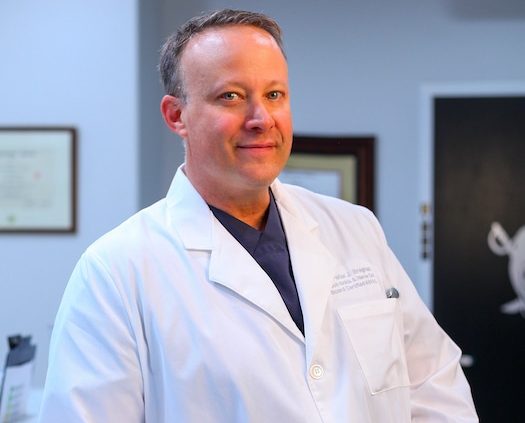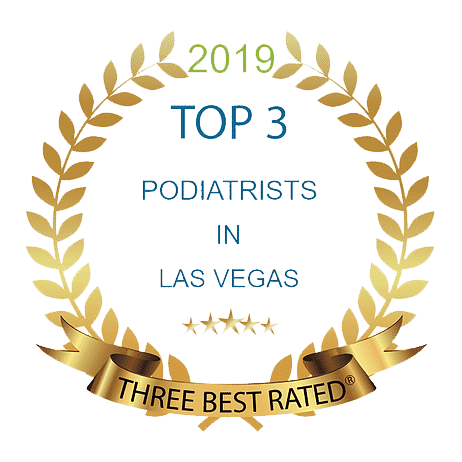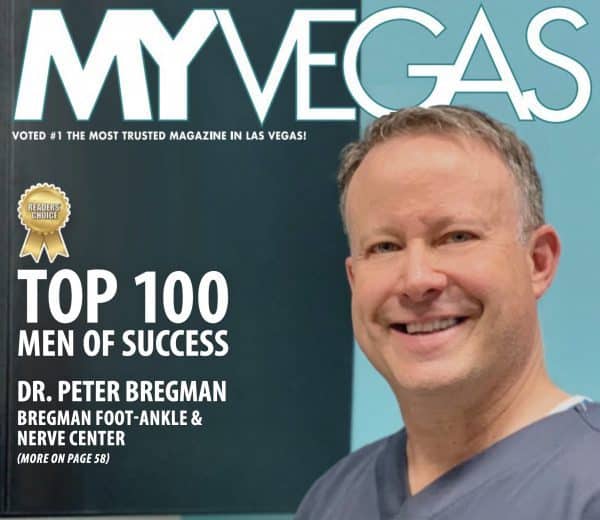
Dr. Peter J. Bregman, DPM
Top Rated Podiatrist in Las Vegas
Patient Resources
What Causes Heel Pain (And How Shockwave Can Help)?
Heel pain is one of the most common symptoms we treat at our office. In fact, if you ask almost any podiatrist, they are likely to tell you the same thing.
What’s more, this frustrating problem is not always as simple an issue as you might expect. There are plenty of potential reasons why someone might start experiencing it. The types of pain experienced can also be different, as well as the where in the heel pain is felt. Is it a dull ache, or more of a sharp, burning, or electric sensation? Is it in the back of the heel or under the foot?
Going over all possible sources of heel pain, however, will have you reading this blog for, well, a long time. So instead we will review some of the most common causes, and how Shockwave (one of the most advanced and highly effective non-invasive treatment we provide at our office) can help your heels stop hurting.Download
FINDING THE Cause?
As we have mentioned, there are many possible causes. And this really should come as no surprise – with all the impact forces your feet endure throughout the day (standing, walking, maybe even jumping and all the running) can start to wear down even the toughest tendons (yeah, we are talking about you, Achilles tendon) and ligaments in your feet.
This is especially true when it comes to the heels. These parts of the feet are the first to come into contact with the ground with each and every step. That’s why heel pain is so common.
Now, what conditions cause this often-debilitating symptom? Let’s take a look.

Plantar Fasciitis
This is the most common causes of heel pain, and the source of uncomfortable mornings for a lot people.
Each foot is supported by a thick band of tissue running beneath it, called the plantar fascia. The plantar fascia can develop small tears if it endures enough repetitive stress. Once that happens, the band becomes irritated and inflamed, causing pain.
The pain of Plantar Fasciitis is most often worst when getting out of bed or after a long period of sitting, as the band has not been in motion for some time. After you have a chance to move a bit, the pain usually starts to subside – but only temporarily. It’ll be back the next morning.
Tarsal Tunnel Syndrome
This condition is often misdiagnosed by many doctors as plantar fasciitis. It has a very similar presentation but also differs in a few key ways. One of the main differences is that it will radiate and can hurt when off of the foot unlike plantar fasciitis. Sometimes you can have both problems at the same time which is why it seems to never get better. Dr. Bregman is one of top doctor’s in the world in treatment of this condition. Bregman Foot-Ankle & Nerve Center has all the tools in the office to help make the proper diagnosis. Many patients will complain of numbness and or burning and tingling in the foot especially after activity.
Achilles Tendonitis/Heel Spur
The Achilles tendon is the largest tendon in your body, connecting your heel bone to your calf muscle. Just like the plantar fascia, if the Achilles tendon is forced to do more than it is prepared to handle, or endures repetitive forces over a long time, it can begin to develop small tears and grow inflamed.
The pain from Achilles tendinitis usually starts as a small ache either just above the heel or a little higher up on the leg, depending on where the damage is occurring. This pain can grow worse after time spent running or climbing stairs, and also feel rather stiff in the morning.
Stress Fractures
A Stress Fractures is another injury caused by the body taking on greater force or activity than it can handle at the time. In this case, a bone has started to crack under the pressure.
Instead of making a full break through the bone as you would commonly expect from a fracture, a stress fracture’s crack only runs along the surface. The pain of this condition may not be very noticeable at first, but as force continues to be applied to the weak point of the bone, the crack can worsen and pain will increase.
Of course, there are other causes of heel pain, including bursitis, arthritis, heel spurs, and Sever’s disease in children ages 8-11 – just to name a few. But the four we mentioned above are among the most frequent.
TREATING HEEL PAIN WITH SHOCKWAVE TECHNOLOGY
It’s important that you visit our office if you are experiencing heel pain so that we can provide an accurate diagnosis of your condition. Only then will we be able to determine the most effective method of treatment for your specific case. Different causes may require different techniques, and your needs and lifestyle must also be taken into consideration when determining the best course of action.
Treating the problem itself will almost always involve a period of rest to allow the body to heal and strengthen. We may also recommend that you wear special customized inserts, and incorporate some easy stretching exercises into your daily routine.

But what if you have tried these conservative treatments, and your heel pain is still making it difficult for you to do the things you love?
Shockwave may be just what you need to get over the “hump” that is keeping you from fully recovering!
With this advanced and highly effective non-invasive treatment method, your body’s regenerative potential will improve through the use of acoustic pressure waves, which safely increase metabolism and blood flow and stimulate the healing of soft tissue injuries – including those that cause heel pain.
Essentially, it triggers your body’s natural healing processes so that you can heal better and faster.
But it gets better:
A treatment session usually lasts only about 10 minutes, usually requires no anesthesia, presents no side effects, and there is no need for downtime to recover – you can walk right out the door and get back to your busy routine. You may even start getting immediate pain relief after a single session! Though, if your condition is chronic, it may take three or more treatment sessions for relief to begin – which is still not a bad deal! If you are looking for quicker and more effective results, we have biologic augmentation available as well.
Get the Help You Need Today
Regardless of what is causing your heel pain, the worst thing you can do is keep pushing through the pain. At best, you’ll continue being miserable, and at worst the problem will become more severe and chronic!






